This a quick comparison between the old Geek Out 100 and the new Geek Out V2. I had a chance to listen to the prototype at CanJam 2015 and was thoroughly impressed.
To prevent any biases, I want to disclose that I own both of these DACs.
Accessories
Off the bat, I noticed the lack of accessories in the V2. The USB extension cable and pouch were extremely valuable in my opinion as these are portable devices and we may have to toss them around a bit or make them fit around a small space in a coffee bar. Also with the new GO V2 design, dust could easily enter the chassis when tossed into a laptop bag. A pouch would be useful.
Build Quality
The largest complaint of the original GO was the amount of heat generated. I’ve never had that issue because I didn’t carry it around in my pocket connected to my Android phone nor did I touch it while it’s connected to my laptop. That said, the new design helps dissipate heat enormously. It’s just warm to the touch as opposed to piping hot. I think the guys at LH Labs did a superb job in design overall. There are complaints about the quality of the 3D printed enclosure…which I agree on…it does feel/look cheap. However, I didn’t have any issues with the buttons or the LEDs not showing up properly.
Sound Quality
Here’s where you forget all the flaws of the V2 (which weren’t even sonic performance related anyway). The Geek Out V2 sounds amazing, especially when compared to the original Geek Out. I did have the GO 1000 and GO 100 on hand but did most of my testing with the GO IEM 100. I believe it to be a worthy upgrade to the original. The sound is a lot smoother, more coherent, and more holographic. The original GO sounds a bit strident and aggressive in comparison. The V2 is more tonally balanced and has better resolution and articulation. The GO V1 sounds a bit artificial in comparison…which is surprising because I thought the V1 sounded better than most USB DACs I’ve encountered on my journey. This speaks volumes on the amount of improvement LH Labs has done with the V2. Overall I would say there’s an overall 30% improvement over the original (subjectively of course).
It’s important to note that these two DACs have different sonic signatures. These are some of my raw notes during the A/B:
- The V1 tilts towards the brighter side with a blacker background. The V1 comes in harsh sometimes but not a big issue. This allows for more shimmer and shine in the highs.
- The V1 also has significantly more bass weight than the V2, albeit a bit looser and less detailed.
- For a few tracks, the V1 seems to have a more difficult time maintaining composure through busy passages.
- Sometimes the V2 does sound veiled in comparison to the V1…possibly due to its warmer signature.
- V2 has a smoother, more natural and realistic vocal presentation.
- V2 has more of a “tube” sound IMO
- Some people may enjoy the brighter nature of the V1. It does give the impression of more air around vocals and instruments and better PRaT. The additional low-end weight helps enormously in this regard.
- I do enjoy the V1’s blacker background
- V2 has more sub-bass presence and is tighter. Great for orchestral type of music.
- The V2 is much more cohesive in tone. Everything just sounds more natural and live.
- Most casual listeners would probably prefer the V1. It’s a really fun DAC.
- The V2 is technically more audiophile-ish. It has everything one would look for in a higher-end DAC (texture, tonal balance, realism, realistic soundstage, timbre). However, I think the V1 is more enjoyable for most genres during casual listening. Yeah, it’s a bit edgy and bright sometimes but it offers benefits that some may prefer.
- Personal opinion, the V1s may actually synergize better with the JH Audio Angies.
- The V1 isn’t cohesive but you could hear the pieces of the music more clearly…which isn’t a bad thing.
- V2 mids are more forward.
I did have a chance to compare the V2 to the Aurender Flow and Chord Hugo (both of which I own), and it doesn’t compare…but I’m sure you didn’t expect it to. The V2 sounds flat and grainy in comparison to the ultra high-end portable DACs but it holds its own in his domain. I’ll have a review up soon on some popular USB DACs (namely the Meridian Explorer2, DACMagic XS, Dragonfly v1.2, and Geek Out V2).
Features
Let’s not forget the GO V2 is fully balanced and allows you to switch between 100 mW (IEMs) and 1000 mW (large cans) modes. I’ve tried them with my JH Audio Angies and modified HD800s and they sound superb. Also you have the choice between two filters (FRM and TCM). I much prefer the TCM (default) setting.
Price
We all know the marginal benefits we get when upgrading our gear. There’s no difference here but thankfully LH Labs has matched the price to the original Geek Outs and lowered the originals by $100. That makes the originals a HUGE value. I just purchased a few for my siblings. The new Geek Out V2 could be purchased here.
Conclusion
If you have a darker IEM or would prefer a brighter DAC with great PRaT…I would go with the Geek Out 100. It has shine, great low-end response, and is quite resolving. From my listening, the V1 is more “inaccurately” emotive than the V2. I tap my toes more often with the V1.
If you prefer more “audiophile” sound, accuracy, realism, cohesion, and a warmer sonic signature, the V2 is perfect. For the casual listener I would definitely recommend the Geek Out 100. If you’re a critical listener, you’ll be a bit disappointed with the original Geek Out as the vocals and instruments aren’t as realistic and natural.

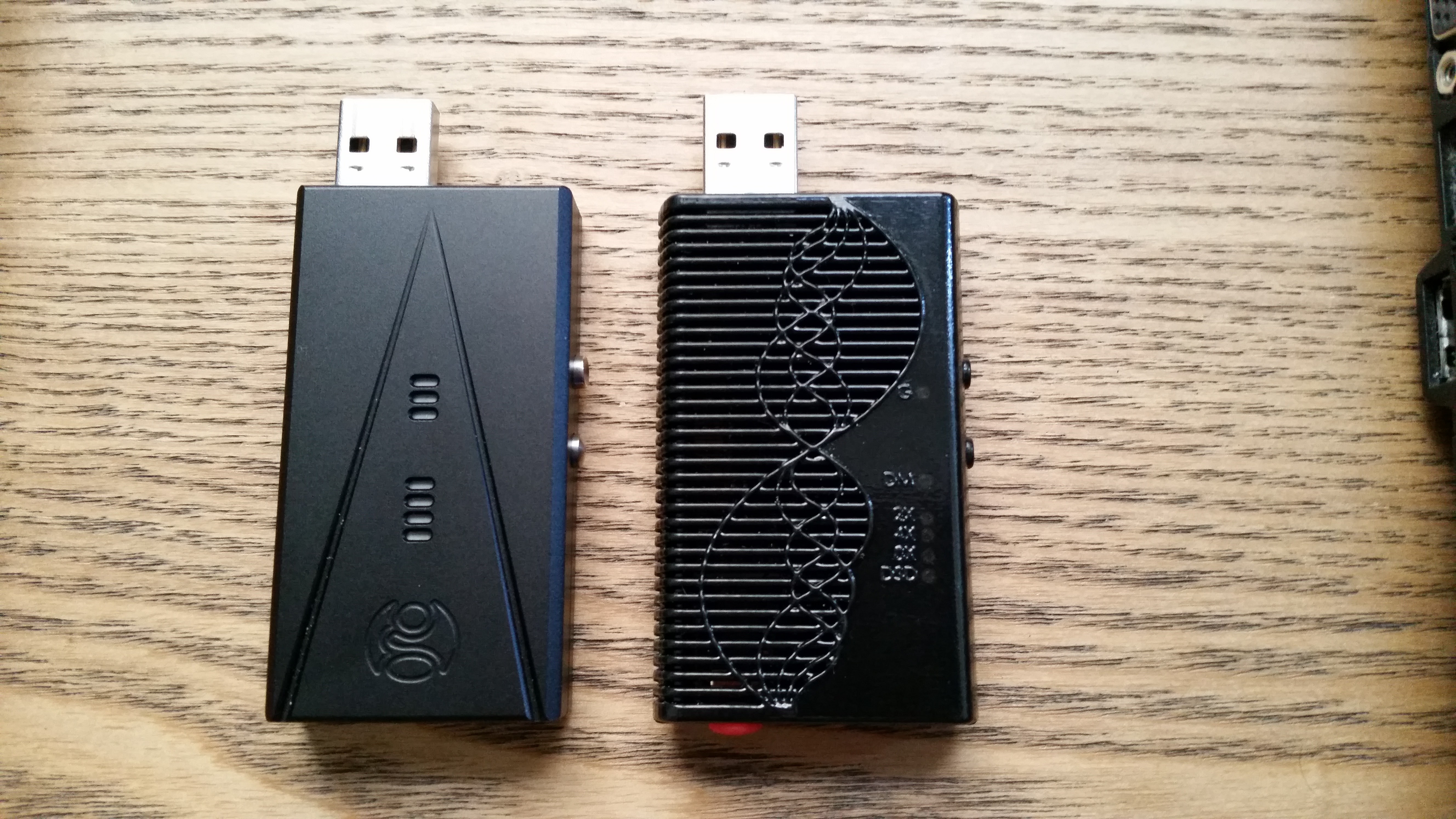


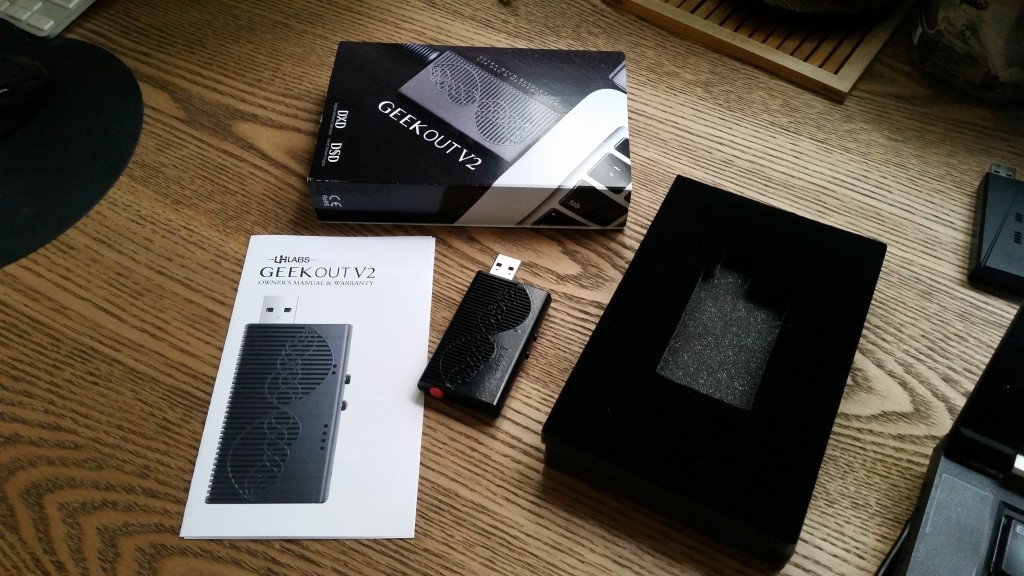

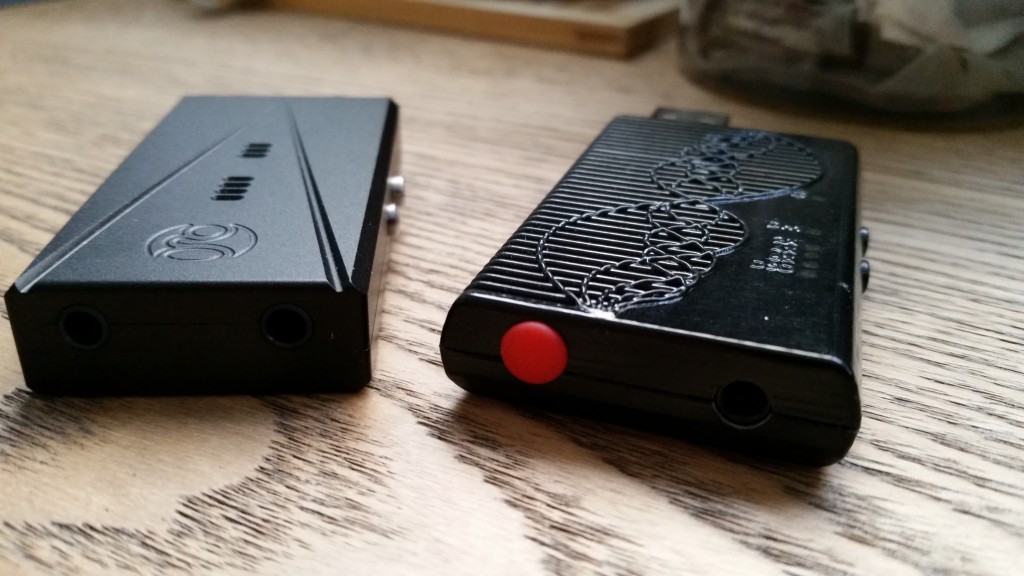
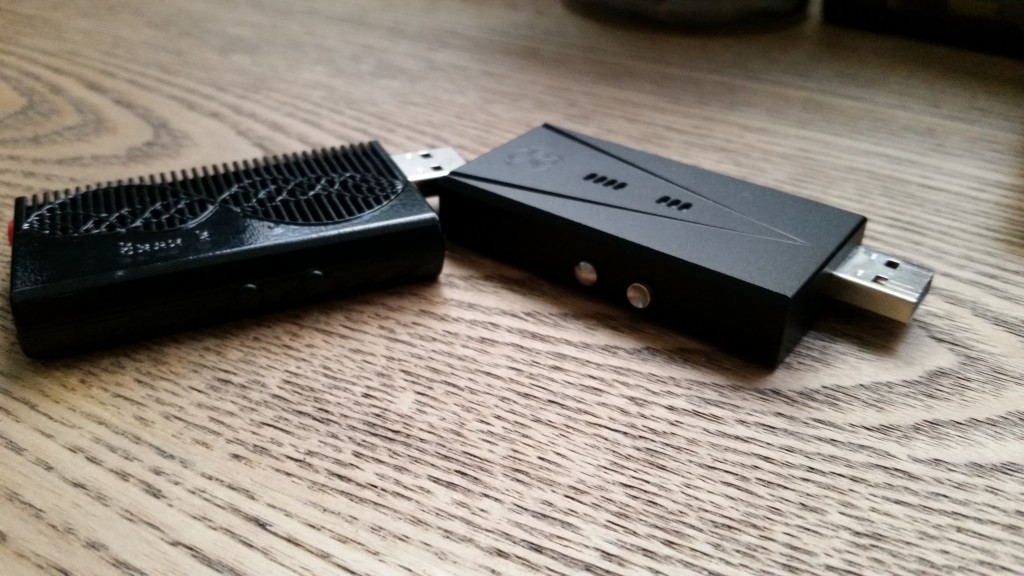

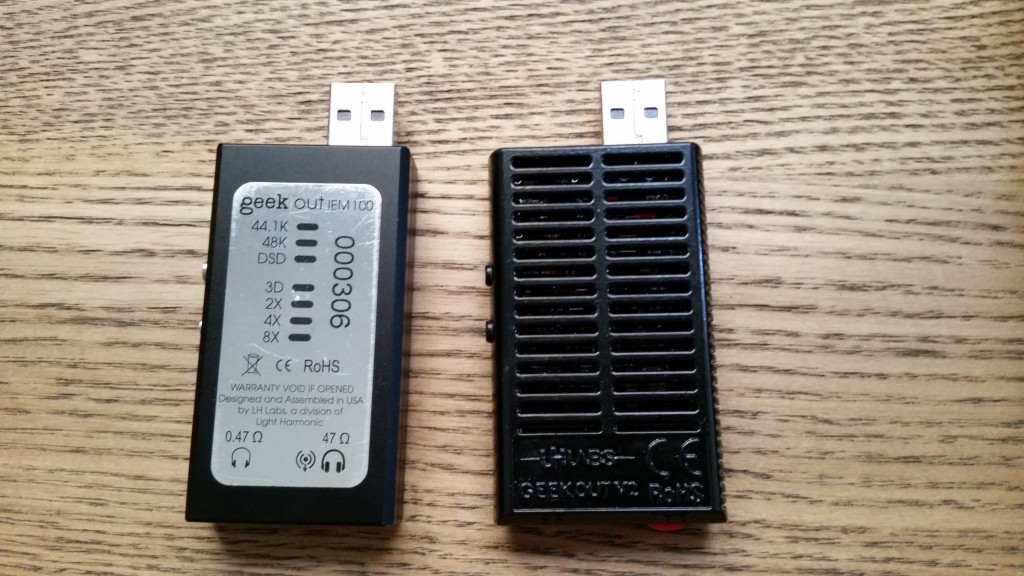
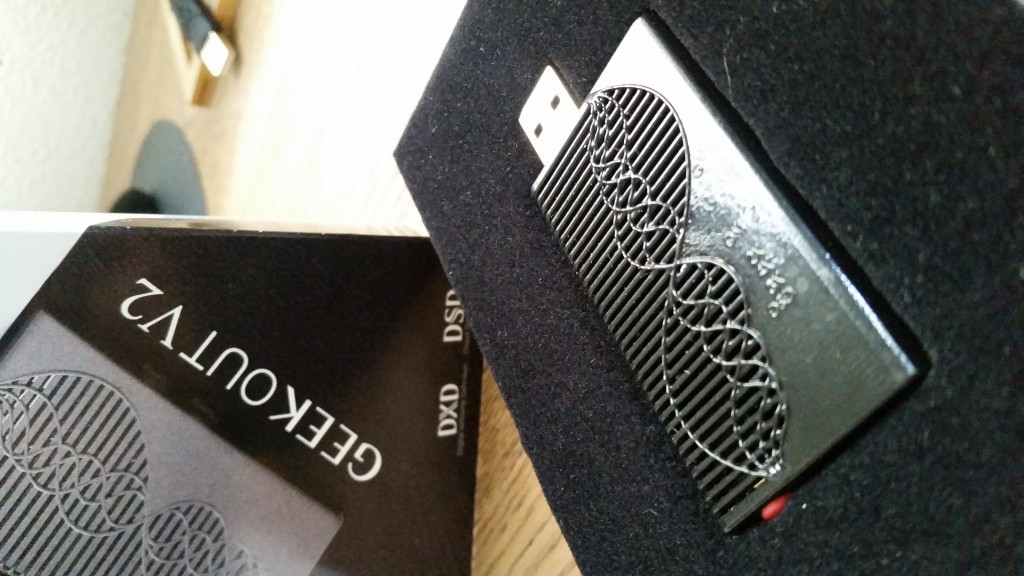


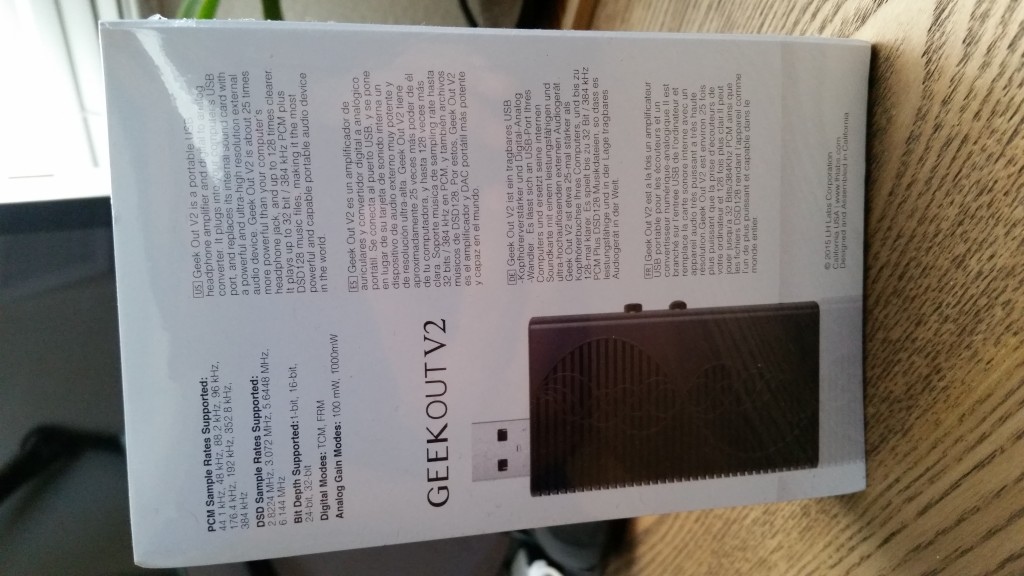



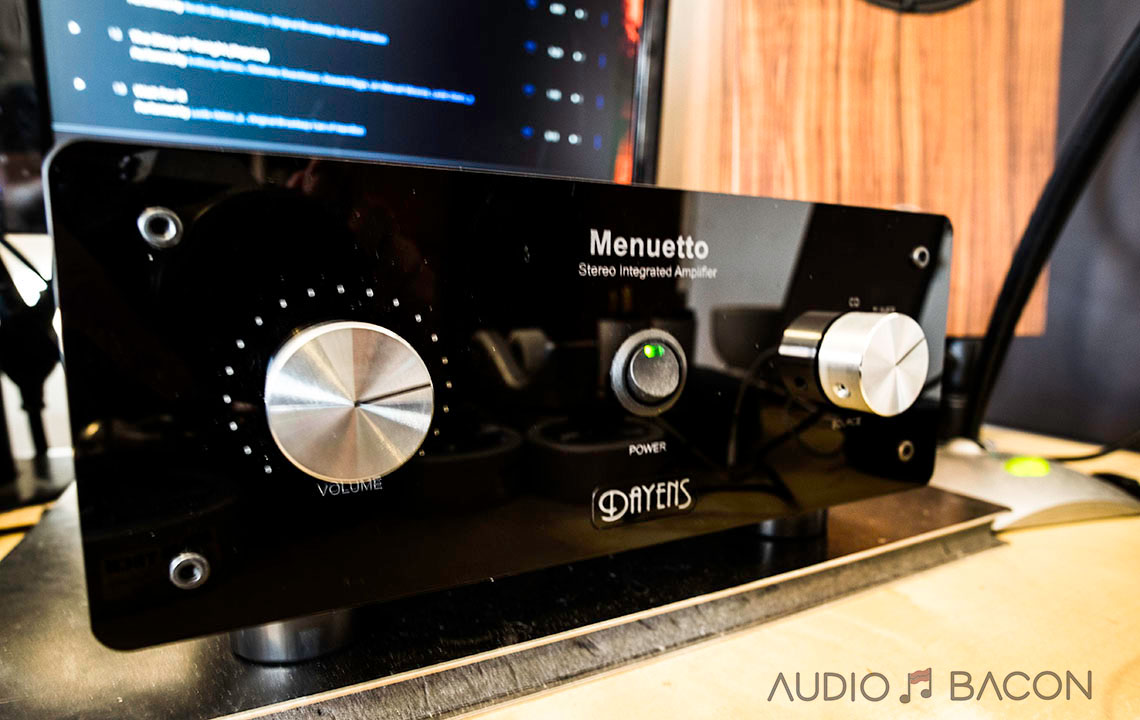
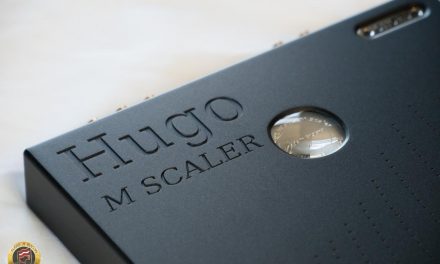
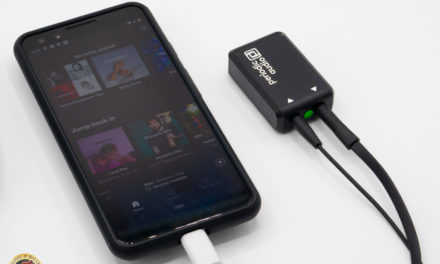

Love my GO V2! Have the GO 450 prior. There is a difference. The V2 is more resolving and involving. The sound also seems more cohesive, better timed, and nuanced through my Phillips Fidelio X2’s. I don’t know what more you could ask for? The 3d printed casework has been criticized but it does the job and looks OK. It still runs a bit hot. I’d recommend at least 10 minutes of warm-up time for the class A amp and clocks to acclimate….perhaps even 20 minutes optimally. It is one sweet sounding DAC/AMP. I’ve very, very, happy!
I’ve yet to listen to the X2s! Heard nothing but great things. The V2s are definitely a force to be reckoned with. Cohesive is probably the better blanket term to encompass my general impression of the V2 vs. V1. There were actually a few tracks I preferred with the V2 over the Aurender Flow (!!) but those were very few. Just comes to show how amazing this DAC/Amp is.
nice wooden table!
Makes the DACs sound better!
Thanks for all of the effort that go into your reviews. The info I get from Audio bacon is, by far, the most useful I come across. Right now, I’m struggling with the next step to make regarding better power in my system. It just isn’t clear if power regenerators, isolation transformers or conditioners do a better job. It would be great if you would do a shoot-out of the best-in-cleass of each (say PS Audio regenerator v Shunyata Denali conditioner). Looking forward to that someday.